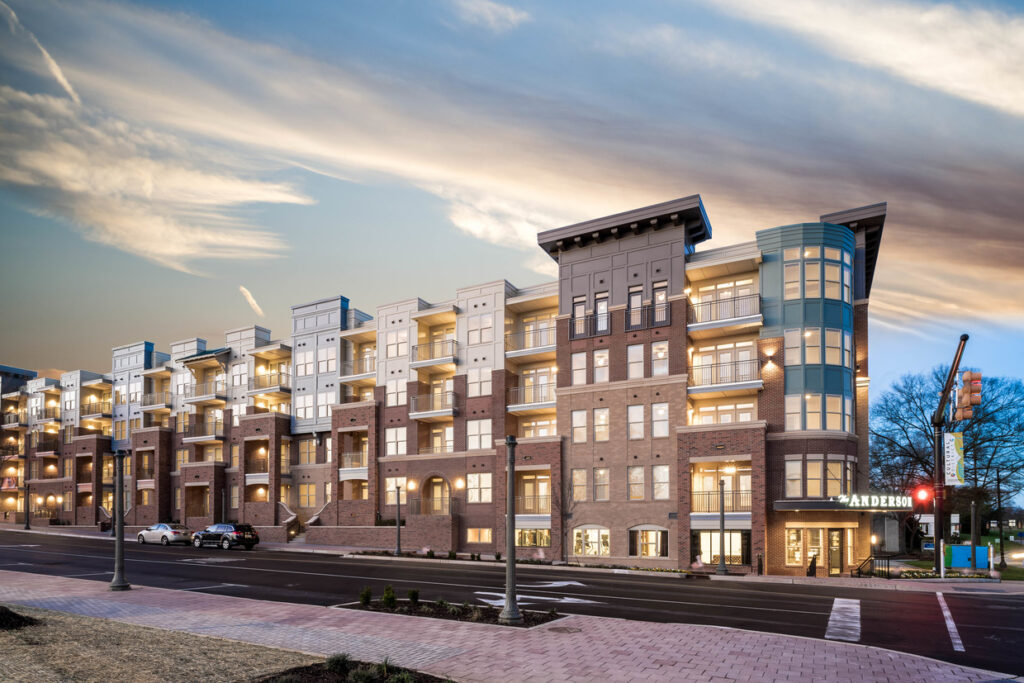HOA MANAGEMENT gastonia, nc
As a satellite city to nearby Charlotte, Gastonia offers residents proximity to a major metropolitan area with more affordable housing. Increasingly, residents of Mecklenburg County are moving west to Gastonia to escape the hustle and bustle of life in Charlotte.
Regardless of whether your community has existed for many years or is a relatively new build, William Douglas Property Management has decades of experience in Gaston County and can help provide expert leadership for your homeowners association.
About Gastonia
Gastonia, North Carolina, is a city centrally located more or less in the center of Gaston County. Gaston County has fifteen municipalities, and Gastonia is the largest by far, with a population of 80,411 based on the 2020 U.S. Census. Gastonia has been the seat of Gaston County since 1911.
By an act of the North Carolina General Assembly, Gastonia was chartered and thus incorporated as a town during a Saturday Session on January 20, 1877. The town charter was changed to a city charter around 1892, and the Town of Gastonia became the City of Gastonia.
Historical Population per the United States Census Bureau
Census Pop. %±
1880 236 —
1890 1,033 337.7%
1900 4,610 346.3%
1910 5,759 24.9%
1920 12,871 123.5%
1930 17,093 32.8%
1940 21,313 24.7%
1950 23,069 8.2%
1950 23,069 8.2%
1960 37,276 61.6%
1970 47,322 27.0%
1980 47,218 −0.2%
1990 54,732 15.9%
2000 66,277 21.1%
2010 71,741 8.2%
Gastonia, as can be surmised from the 1880 U.S. Census population calculation total of 236 was an extremely small settlement. However, compared to other settlements within Gaston County during the 1880 U.S. Census, Gastonia was the second largest with Dallas, the then county seat’s population totaling 417. However, by the turn of the 20th century, Gastonia’s population was four times that of the next largest town in Gaston County, McAdenville. From that U.S. Census forward, Gastonia’s population and city limits have grown exponentially past all the other municipalities within Gaston County.
Gaston County was first established from the southern section of Lincoln County in 1846. The county was named in honor of William J. Gaston (1778 – 1844). W.J. Gaston was a highly esteemed member of the North Carolina Supreme Court and a United States Congressman.
The population in 1850 per the U.S. Census for the newly created Gaston County was 8,073. The most recent population calculation of Gaston County, per the 2020 U.S. Census, was 227,943. Gaston County is 356.03 square miles, with a population per square mile of 578.8. Both of these metrics were determined by the 2010 U.S. Census Bureau. The Catawba River makes up the eastern county border of Gaston County with Mecklenburg County. To the north, Lincoln County borders Gaston County, on the west Cleveland County, and South Carolina’s York County borders on the south.
Gaston County is situated in the far west lower corner of the North Carolina Piedmont region. The overwhelming majority of Gaston County is considered to be within the Catawba-Wateree River Basin. A narrow parallel strip mirroring the western county line represents what portion of the Broad River Basin is within Gaston County. The Catawba and Broad river basins comprise the Santee River Watershed.
A brief historical overview of the Gastonia Area
Findings at Native American archaeological locations throughout the area have discovered proof of Native American inhabitants reaching back more than 5,000 years. The fertile land and abundant wildlife of the Catawba River Basin were apparently home to many thousands of Native Americans over the five-plus millenniums. The written history of the inhabitants of the Catawba River Basin only dates back to the 1540 expedition of de Soto. The first recorded inhabitants of the future Gastonia were the Cherokee people.

On May 14, 1729, the British Crown assumed full authority of the North Carolina colony from the Lord’s Proprietors. The last share of the Lord’s Proprietors was transferred to the British Crown on September 29, 1729. Population estimates and population density areas were collected at this time of transition. Reportedly the future Gaston and Cleveland counties and Mecklenburg County were home to Catawba, Congaree, Santee, Sugeree, Shakori, Sissipahaw, and Eno Indians.
Settlers of European descent began arriving in the Gaston County area in the 1700s in larger numbers. The “Great Wagon Road” greatly increased the migration of settlers of European descent into the Piedmont region and future Gaston County. These early immigrants were predominantly of Scots-Irish, Pennsylvania Dutch (immigrants of German extraction), and English descent. The mass of these settlers arrived after 1744 via the Great Wagon Road. The Great Wagon Road began in Pennsylvania with a route through Maryland, Virginia, North Carolina, South Carolina and concluding in Georgia as the road developed.
The Great Wagon Road developed over many decades. For its time, it is said it was the heaviest traveled road in America. It is safe to say the further down the Great Wagon Road, the rougher the travel. There were many trails and footpaths that branched off the road that developed over time into other roads. The Great Wagon Road had not fully developed through the Charlotte area by the 1740s; however, there were still many trails. One such trail that led into the future Gaston County was across the Catawba River at the Tuckaseege Ford. Crossing the Tuckaseege Ford today would bring a person into present-day Mount Holly. Presumably, most early settlers of European descent to Gaston County arrived across Tuckaseege Ford.
Intuitively, the eastern area of Gaston County was settled first because of the proximity to population and roads that developed in Mecklenburg County first. One of the first settlements in Gaston County was in the future Belmont, a colonial fort. It was known as the “Fort at the Point” and was constructed in the 1750s reportedly by Dutch settler James Kuykendall and other nearby settlers. The “Point” was the point of the confluence of the Catawba and South Fork rivers. The fort was constructed because of the conflicts between the Cherokee Indians and the settlers. However, there were reportedly no Indian attacks against the fort.
In 1846, Gaston County was established from the southern part of Lincoln County. The first U.S. Census for Gaston County in 1850 totaled 8,073. Interestingly, Lincoln County’s first U.S. Census in 1790 population totaled just 9,246. The 1790 Lincoln County U.S. Census was comprised of all of the areas that would become Gaston and Catawba counties and a small portion of what would become Cleveland County totaling approximately 1,200 square miles.
The future Gaston County area in 1790 would only comprise 364 square miles. It would be safe to surmise that the area that comprised the future Gaston County probably had a population of three to five thousand in 1790. Another assumption is that the majority of the population in the future Gaston County most likely lived in the county’s eastern area. This assumption is based on the better farmland found along the Catawba River and South Fork Branch. In addition, the early settlements along the Catawba River are also indications of a higher population density.
The early settlers to the future Gaston County were primarily subsistence farmers with small-scale farms cultivating corn, grains and raising livestock. The invention of the cotton gin in 1793 allowed many subsistence farmers to transition to cultivating cash crops and larger farms. Cash crops, being crops raised for market to be sold at the highest price. Cotton production in North Carolina was very limited as compared to other crops being cultivated at the beginning of the 1800s. In 1810, it was estimated that the North Carolina cotton crop was only 3,296 bales. A cotton bale is around 480 pounds. The majority of this was short-staple cotton which was being cultivated in the coastal region of North Carolina. By 1860, within fifty years, annual cotton production in North Carolina had increased from 3,296 bales to 145,514 bales.
Long-staple cotton was ideal for cultivation in the Piedmont region, whereas short-staple cotton was not. Additionally, the cotton gin made cotton cultivation possible and profitable in the soil of certain areas of the state. The cotton gin is a machine that efficiently removes cotton fibers from its seeds. Before the cotton gin, this task had to be done by hand and was so labor-intensive it was not profitable to cultivate in North Carolina. While cotton was grown in Gaston County, other more successful crops such as corn and grains were grown.

It is estimated that by the 1820s, approximately a third of North Carolina’s population had migrated east or south to more fertile farmlands lands. This was due to poor farmland management and new lands opening up to the west. As a result of this migration, small farms were consolidated into larger farms, and better land management practices were beginning to be implemented.
The Atlanta & Richmond Air Line Railway arrived in Gastonia in 1872. The Chester & Lenoir Narrow Gauge Railroad arrived in Gastonia arrived in 1873. These two railroads intersecting in Gastonia brought a great deal of economic opportunity to the area. Railroads opened new markets for farmers, merchants, and manufacturers. In the case of Gastonia, textile mills benefited from the railroads and the proximity to cotton production in the region’s cotton fields.
Gastonia Station was founded in 1872 and was the origin of Gastonia. While no original structures survive, the intersection of W. Main Avenue and N. South Street is the location of the Gastonia Station settlement. Today, the downtown area of Gastonia still has many miles of rail lines running through and along the many streets.
Textile manufacturing grew rapidly in the south beginning in the late 1880s. Gaston County was known to have more textile mills than any other county in the south at the turn of the 20th century. Gaston County, in 1890, had ten cotton mills and by 1910 had forty-eight. During the 1920s, Gaston County had ninety textile mills in operation. This made Gaston county the largest textile-producing county in North Carolina and the third-largest textile-producing county in the nation.
By 1906, there were eleven steam-powered cotton mills within the city limits of Gastonia. By the end of World War One in 1918, there were twenty-seven cotton mills in Gastonia. Gastonia’s population increased from the 1910 U.S. Census of 5,759 to 12,871 in the 1920 U.S. Census. By the 1930 U.S. Census, the population had increased to 17,093, and by the 1940 U.S. Census, it had climbed to 21,313. Without a doubt, all this prewar population growth was due to the increased textile manufacturing workforce.
The most infamous event in Gastonia’s relatively short history was the Loray Mill Strike of 1929. This event is noted by historians as one of the most influential events in the United States labor movement. For the workers and strikers at the Loray Mill, the strike was deemed a tactical failure. However, it was deemed a strategic success for the labor movement because it eventually led to labor reforms.
The Manville-Jenckes Company of Providence, Rhode Island, owned the Loray Mill at the time of the strike in 1929. The National Textile Workers’ Union, which reportedly had strong communists’ leanings, organized a strike against the mill for poor working conditions and higher wages. On April 1, 1929, around 1,800 workers walked off their jobs. Demands included a forty-hour workweek, a $20 a week minimum wage, union recognition, and the elimination of the stretch-out system. The stretch-out system was essentially an unrealistically manufacturing production quota.
The strike escalated rapidly from this point. In this era, many industries, textile manufacturing in particular, provided housing for their workers, commonly known as mill villages. Sometimes this housing was offered at a reduced price to entice workers, and probably to a certain extent, make it more difficult for workers to quit. Once the strike began, the mill owners preceded to evict the strikers from the mill-owned homes. Apparently, this reaction was not anticipated by the strikers, and violence shortly ensued.
The Gastonia Police Department was overwhelmed by the number of strikers and company men who were clashing in the streets. In response, on April 3, North Carolina Governor Max Gardner sent 250 National Guardsmen to the mill to quell the unrest. The National Textile Workers’ Union headquarters was destroyed by a reported 100 to 600 masked men. The National Guard troops were eventually relieved, and local law enforcement once stepped back in to provide order.
As the striking workers were replaced and production returned to normal at Loray Mill, the strikers established an encampment on the city’s outskirts. On June 7, 1929, around 150 strikers marched to the mill to disrupt the night shift. The strikers were turned back by local law enforcement, and they returned to their encampment. Gastonia Police Chief Aderholt and four officers arrived at the encampment demanding the firearms of the strikers. A gun battle ensued, and Chief Aderholt was killed.

A subsequent murder trial with worldwide media coverage followed. The first trial resulted in a mistrial. The second trial resulted in seven of those charged receiving second-degree murder charges. Two of those convicted of second-degree murder skipped bail and fled to the Soviet Union.
The Loray Mill was constructed in 1901. It was massive for its time at six stories and 500,000 square feet. The initial mill was designed to house 50,000 spindles, and 1,060 looms. There were around 3,500 workers at its height of production and was in operation up until 1993. In 2015, the old mill structure was converted to retail space and residential apartments.
The textile economy of Gastonia went the way of the agriculture economy of Gaston County of the 1800s. Textiles dominated the economy of Gastonia from the turn of the 20th century for the next eight decades. This dominance began to change in the 1970s and 1980s when lower-cost imported textile products began entering the American market. In 1993, the North American Free Trade Agreement (NAFTA), the trade agreement between the United States, Canada, and Mexico, was signed into law. NAFTA accelerated the decline of domestic textile manufacturing. Shrinking labor demands for textile workers had already been occurring for decades because of automation within the textile industry; however, NAFTA accelerated this trend.
In the early 1960s, U.S. Interstate 85 construction was completed through Gastonia. In the 1980s, a new four-lane U.S. Highway 321 was opened from Gastonia to Hickory, North Carolina. This directly connected Gastonia with Interstate 40 in Hickory. Interstate 85 eventually turned Gastonia and Gaston County into a bedroom community for Charlotte as Gastonia’s economy moved away from textile manufacturing. The closeness to Charlotte has driven economic development in Gastonia and Gaston County. Being a relatively short commute and lower property taxes has seen a steady increase in Gastonia’s residential development and population since 1990.
Need Association Management?
Contact Us
How to Start
The Process of Working With Us


REQUEST A PROPOSAL
Request a proposal online or call us directly.


WE WILL REVIEW YOUR CASE
Our team of highly trained professionals will review your case.


RECEIVE A CUSTOM TAILORED PLAN
We will create a customized management plan for your community.


SEAMLESS TRANSITION
We will implement a seamless management transition and integrate our tech.


SIT BACK & RELAX
Enjoy better, affordable and a more reliable, hassle-free management system.




